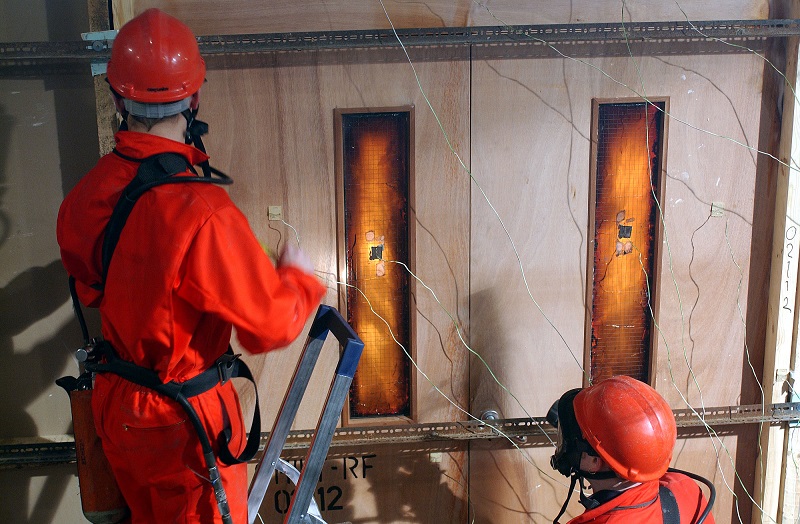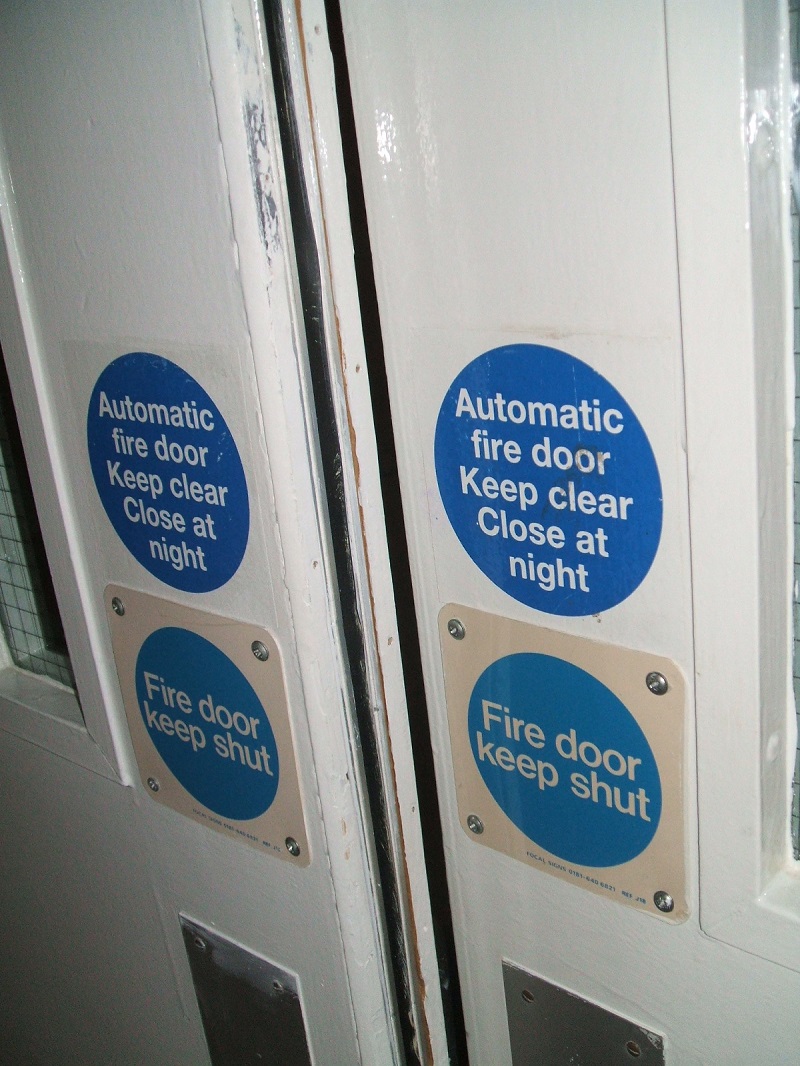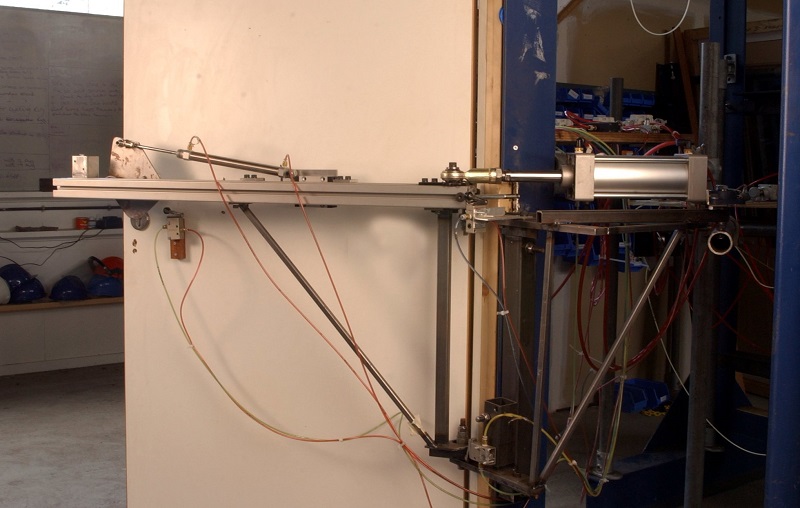The design, installation, and maintenance of fire protection measures in healthcare settings is crucial for the successful safeguarding of patients, visitors, and staff.
And fire doors have an important role to play, given that complete evacuation of a healthcare site is often impractical and highly challenging due to having many occupants all with differing needs.
The most-common approach, therefore, is progressive horizontal evacuation.
Peter Barker, technical manager at Warringtonfire, explains: “From hospitals to nursing homes, given their size and complexity, healthcare premises present a number of major challenges when it comes fire protection in buildings.
“As such, having a clear and robust fire safety strategy is crucial.”
The basic principle of progressive horizontal evacuation involves moving occupants from the fire-affected area through a fire-resisting compartment line to an adjoining area, which is designed to protect the occupants from fire and smoke.
In conjunction with other measures, fire-resistant compartment lines are a critical element of a fire safety strategy
Providing it is safe to do so, the occupants remain in the fire safe area (refuge) until the fire is extinguished or, if necessary, further evacuation is required to another refuge or down the nearest stairway to the next floor level or ultimately to a place of safety outside of the building.
“In conjunction with other measures, fire-resistant compartment lines are a critical element of a fire safety strategy”, said Barker.
“If the fire-resistant compartment lines and fire doors cannot be relied upon, the evacuation strategy for the hospital will be severely compromised.”
Doors used within health care buildings must demonstrate fire resistance performance
Functions of fire doors
A fire doorset specified for use in a hospital or healthcare facility will have to provide fire resistance to meet the functional requirements of Part B of the Building Regulations. Moreover, according to HTM 05-02: Guidance in support of functional provisions for healthcare premises, unless pressurisation techniques complying with BS EN 12101-6 are used, or the door is located within a cavity barrier, the doorset must also offer smoke control.
However, there are many other performance and design requirements that hospital and healthcare fire doors must adhere to.
“Cross-corridor doorsets will need to withstand constant opening and closing, as well as resisting potential damage caused by regular impact from hospital trolleys and wheelchairs,” said Barker.
“And doorsets into cleanrooms must be totally hygienic to avoid harbouring harmful pathogens, while doors on high-security wards must safeguard patients and staff.”
If the fire-resistant compartment lines and fire doors cannot be relied upon, the evacuation strategy for the hospital will be severely compromised
Given the multifunctional use of fire doors, fire safety training should be given for staff to explain the importance of fire doors. This should be in the context of the overall fire strategy of the healthcare building and how misuse could compromise the performance.
A double door subject to heavy traffic may drop on its hinges, preventing the leaves from fully closing
Planned preventative maintenance
Ongoing maintenance of fire resisting doorsets should also be incorporated in a programme of inspection.
This is key to the longevity of fire protection elements and anticipating malfunction or defects before they occur.
“Planned Preventative Maintenance (PPM) is often the typical route,” said Barker.
“This approach involves regular inspections dictated by relevant risk assessment, professional judgement, and local circumstances.
“Given damage is predominately caused by staff within the building transporting patients and goods, encouraging staff to use doors in a caring, responsible manner can mitigate the chances of this happening.
“This is especially important for personnel who use equipment and machinery that have a high risk of breaking the door, such as pump trucks, trolleys, and beds.
All too often, well-intended repair works by improperly-trained personnel can have a detrimental impact on the fire resistance performance of the door
“If the doorset is in an area with particularly high traffic, it may be necessary to include design features, such as electronic hold-open devices that automatically release the doors on activation of a fire or smoke alarm. Such devices must be approved for use with the doorset designs on site and regularly checked to make sure they will release the door to its closed position in the event of fire.”
Resolving issues
If a fire-resisting door requires repair or remedial works, it is crucial this incorporates operational functionality and fire performance.
For this reason, the person undertaking the works must have a sound knowledge of fire-resisting doorsets and familiarity with the appropriate testing and certification process.
“Along with this knowledge, they need to have all the necessary attributes that form the basis of competence (e.g., skills, experience, and behaviours) to ensure the performance of the doorsets is maintained,” said Barker.
“All too often, well-intended repair works by improperly-trained personnel can have a detrimental impact on the fire resistance performance of the door; whether replacing glazed elements without the correct fire rated glazing seals or fitting incompatible hardware.”
Doorsets must be tested to ensure they remain operational in the event of a fire
Adding assurance
For peace of mind that both fire-resisting products, and the personnel responsible for installing and maintaining them, are up to standard, third-party certification schemes should be considered.
“Although third-party certification is not currently mandated in the UK, NHS bodies are encouraged to utilise such schemes, through the advice given in HTM 05-02: Guidance in support of functional provisions for healthcare premises.
“BM TRADA provides a number of third-party certification schemes for fire door manufacture, fire door installation, and fire door maintenance to help provide confidence in the performance of a doorset throughout its operational lifetime.”
He adds: “Any doorset within a hospital or healthcare environment must serve its purpose, whether that be protecting patients in terms of cleanliness, providing privacy and easy access, or enhancing security.
“However, the door must also provide protection in terms of fire resistance and smoke control, to meet building regulation and design requirements, particularly as these buildings often rely on phased evacuation of patients where time is of the essence.”
